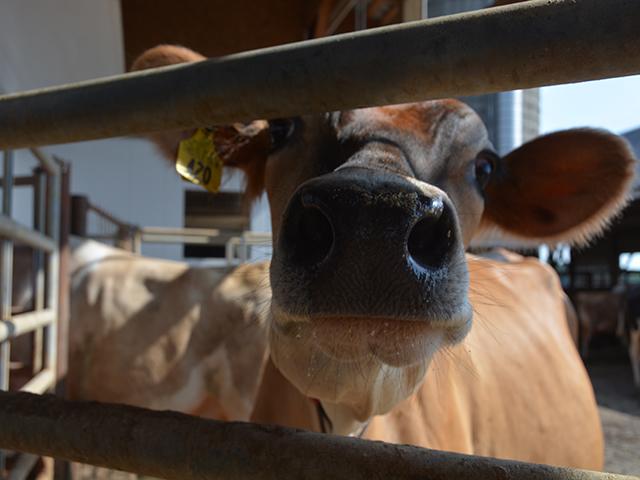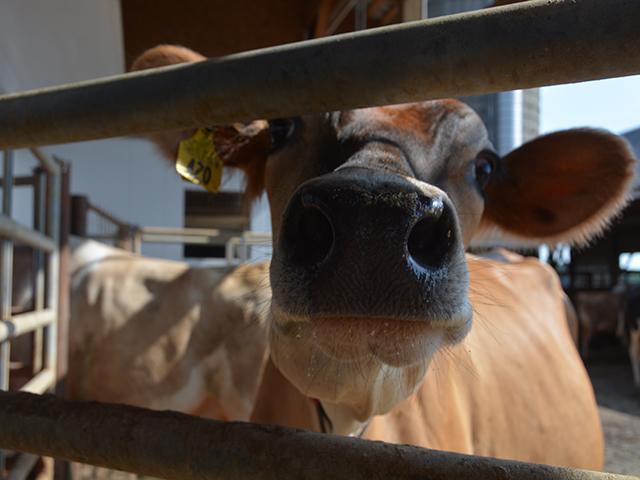Ag Policy Blog
Scientist, Others Question USDA's Information Sharing About H5N1 in Dairy Cattle
USDA's response to highly pathogenic avian influenza(HPAI) spreading from birds to cattle is drawing fire from multiple areas.
A Bloomberg column on Tuesday cited, "The H5N1 crisis at dairy farms shows that public health agencies have failed to absorb the lessons of Covid."
A CNN article noted that researchers trying to track the spread of H5N1 say some USDA data released on Sunday "isn't very useful and is anything but transparent. They also say the government's release of information in the outbreak, which was confirmed in cattle almost a month ago, has been painfully slow."
Scientists raised concerns about how USDA will handle asymptomatic cows. Cattle in a North Carolina herd were reported to have the virus but show no symptoms. Scientists also pointed out influenza viruses can quickly mutate.
The New York Times reported about repeated assurance from officials about the safety of pasteurized milk, but the outbreak with cows could still be more serious than initially believed. "In an obscure online update this week, the Department of Agriculture said there is now evidence that the virus is spreading among cows, and from cows to poultry," the New York Times reported.
Science magazine reported, "Eight U.S. states have reported infected cows, but government scientists have released few details about how the virus is spreading."
As of Tuesday afternoon, 33 dairy herds in eight states have been confirmed as infected by USDA's National Veterinary Services Laboratories. The latest was another Idaho dairy on April 19.
As noted, USDA sought to 239 genetic sequences, including those from cattle, cats, chickens, skunk, racoon, grackle, blackbird and goose. But the raw data lacks some of the information about how the samples were collected, for instance, that helps scientists figure out how the virus may be changing, CNN reported.
P[L1] D[0x0] M[300x250] OOP[F] ADUNIT[] T[]
Essentially, there are experts who feel USDA is slow and limited in releasing data and it's hurting the ability to understand the virus.
"There's a whole community around the world of people like me and my colleagues, who have a lot of experience with this and often can see things or do analyses that might show something that others have missed," said Michel Worobey, a professor of ecology and evolutionary science at the University of Arizona.
Worobey added, "You don't want essentially one group to be the only ones looking at the data. You want everyone, all the experts around the world to be able to do that."
The New York Times article added, "If the department (USDA) were more forthcoming, scientists outside the government could already be helping to contain the virus, Dr. Tom Inglesby, director of the Johns Hopkins Center for Health Security at the Bloomberg School of Public Health, said.
"The days when it was seen as a good plan or acceptable for a government agency to keep all data to manage on its own are gone long ago," he said.
In the NYT article, Dr. Rosemary Sifford, USDA's chief veterinarian, pointed out the volume of staff involved in the investigations. "Please recall that we've been engaged in this for less than a month," she said. "We are working very hard to generate more information."
But as Bloomberg columnist Lisa Jarvis explained, "The USDA's approach to sharing information illustrates part of the problem. Last week, the agency came out with its first public admission of cow-to-cow and cow-to-poultry transmission. Those key nuggets weren't shared in a press release, but rather were buried in the 'FAQ' document. In other words, the USDA isn't exactly keeping secrets, but it also isn't exactly highlighting important developments. That approach counters everything we learned during Covid."
DTN had requested USDA hold a press conference with Sifford or other officials, but the department has not responded.
A week ago in Washington, USDA Secretary Tom Vilsack said the number of dairy farmers affected is small and the virus is not fatal to cows. He said a bigger challenge remains dealing with HPAI in poultry.
Bloomberg column https://en.edairynews.com/…
CNN article https://www.cnn.com/…
Science article https://www.science.org/…
NYT article https://www.nytimes.com/…
Chris Clayton can be reached at Chris.Clayton@dtn.com
Follow him on social platform X @ChrisClaytonDTN
(c) Copyright 2024 DTN, LLC. All rights reserved.






Comments
To comment, please Log In or Join our Community .